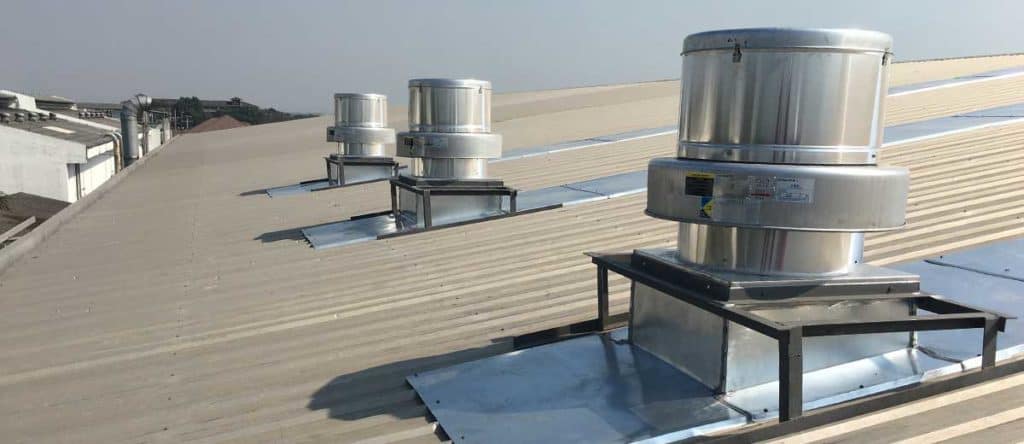Unleashing the Power of Roof Exhaust Fans: Enhancing Ventilation and Efficiency
In the realm of ventilation solutions, roof exhaust fans stand as stalwart guardians, ensuring optimal airflow and environmental comfort within a variety of structures. From industrial warehouses to residential attics, these silent heroes quietly go about their task, expelling stale air, moisture, and contaminants, while ushering in a fresh, revitalizing breeze.

Understanding the Essence of Roof Exhaust Fans
Roof exhaust fans, also known as attic fans or roof ventilators, are pivotal components of ventilation systems designed to regulate temperature and air quality within enclosed spaces. Installed atop roofs, these fans leverage the natural forces of convection and wind to draw out hot air, noxious fumes, and excess humidity, thereby preventing the buildup of heat and moisture that can lead to a host of structural and health-related issues.
The Mechanics Behind Roof Exhaust Fans
Harnessing Nature's Forces
Roof exhaust fans operate on a simple yet ingenious principle: hot air rises. By strategically positioning these fans at the highest point of a structure, typically on the roof or in the attic, they capitalize on this natural phenomenon. As the sun beats down on the roof, the air inside heats up, causing it to expand and ascend. The exhaust fan, with its strategically placed vents, creates a pathway for this heated air to escape, effectively lowering the temperature inside the building.
Balancing Act: Intake and Exhaust
A well-designed ventilation system incorporates both intake and exhaust mechanisms to achieve optimal airflow. While roof exhaust fans expel hot air from the building, intake vents located at lower levels allow cool, fresh air to enter, facilitating a continuous cycle of ventilation. This balanced approach not only maintains a comfortable indoor climate but also prevents moisture buildup, mitigating the risk of mold and mildew growth.
Applications of Roof Exhaust Fans
Industrial Settings
In industrial environments where machinery operates at high temperatures, proper ventilation is paramount. Roof exhaust fans play a crucial role in dissipating heat and removing airborne contaminants, ensuring a safe and productive workspace for employees.
Residential Usage
For homeowners seeking to optimize energy efficiency and indoor air quality, roof exhaust fans offer a cost-effective solution. By reducing the workload on air conditioning systems and preventing heat buildup in attics, these fans contribute to lower energy bills and a healthier living environment.
Commercial Establishments
From restaurants to retail stores, commercial establishments rely on roof exhaust fans to maintain a pleasant atmosphere for customers and employees alike. By eliminating cooking odors, smoke, and excess humidity, these fans enhance comfort and promote a positive customer experience.
Advantages of Roof Exhaust Fans
Energy Efficiency
Unlike traditional air conditioning systems that consume significant amounts of electricity, roof exhaust fans operate on a fraction of the power while delivering comparable results. By harnessing natural airflow, these fans provide ventilation without the hefty utility bills.
Moisture Control
Excessive moisture can wreak havoc on buildings, leading to structural damage and health hazards. Roof exhaust fans help regulate humidity levels, preventing condensation buildup and mold growth, thus safeguarding both property and occupants.
Environmental Sustainability
In an era marked by increasing environmental awareness, roof exhaust fans emerge as eco-friendly alternatives to mechanical ventilation systems. By reducing reliance on fossil fuels and minimizing carbon emissions, these fans contribute to a greener, more sustainable future.
Choosing the Right Roof Exhaust Fan
Sizing Considerations
Selecting the appropriate size and capacity of a roof exhaust fan is essential to ensure effective ventilation. Factors such as the size of the building, the volume of air to be circulated, and the climate conditions must be taken into account to determine the optimal fan size.
Quality and Durability
Investing in a high-quality roof exhaust fan pays dividends in the long run. Look for reputable manufacturers known for their durable construction, efficient performance, and reliable warranties. A well-built fan will provide years of trouble-free operation, delivering peace of mind and value for money.
Installation and Maintenance Tips
Professional Installation
While roof exhaust fans are relatively straightforward to install, it's advisable to enlist the services of a professional technician for optimal results. Proper placement, secure mounting, and correct wiring are crucial for safety and performance.
Regular Maintenance
To ensure continued efficiency and longevity, roof exhaust fans require periodic maintenance. This includes cleaning the fan blades, lubricating moving parts, and inspecting electrical connections for signs of wear or damage. By staying proactive with maintenance, you can maximize the lifespan and effectiveness of your ventilation system.
Conclusion
Roof exhaust fans represent more than just a means of ventilation; they embody a commitment to comfort, efficiency, and sustainability. From industrial complexes to residential dwellings, these silent sentinels tirelessly work to maintain optimal indoor environments, enhancing quality of life and preserving property value. By harnessing the power of natural airflow, roof exhaust fans offer a simple yet effective solution to the challenges of temperature regulation and air quality control. Invest in the future of your building with roof exhaust fans—where innovation meets ventilation.
- Industry
- Art
- Causes
- Crafts
- Dance
- Drinks
- Film
- Fitness
- Food
- Spiele
- Gardening
- Health
- Home
- Literature
- Music
- Networking
- Other
- Party
- Religion
- Shopping
- Sports
- Theater
- Wellness
- News


